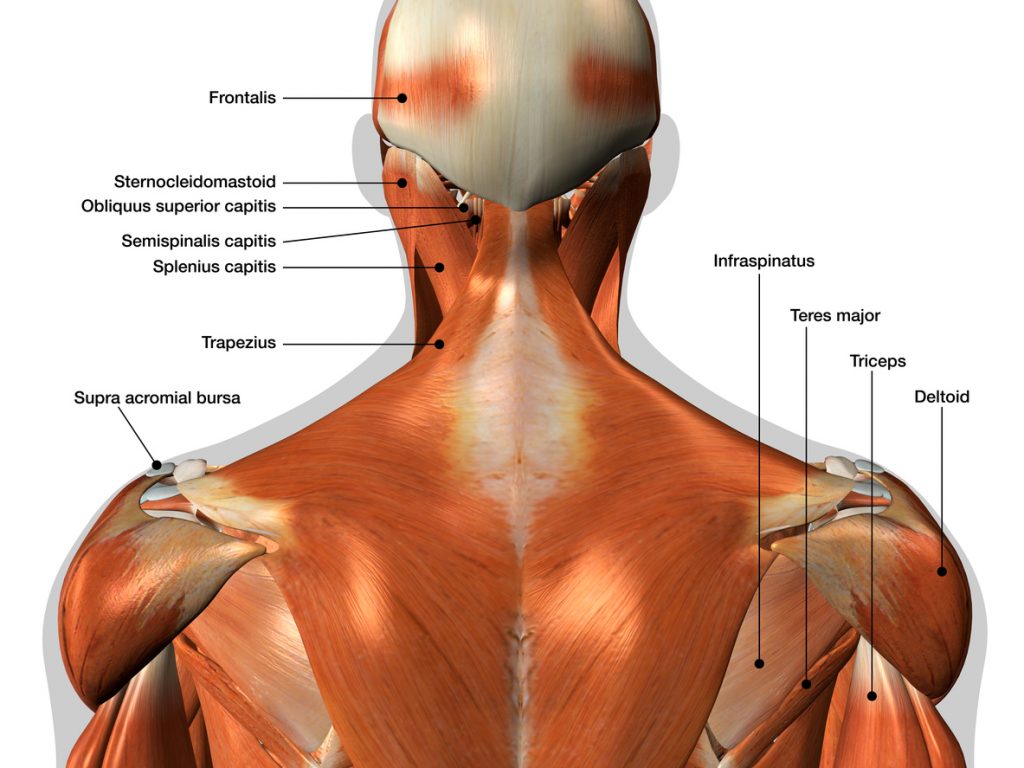The deltoid muscle is a superficial muscle that covers the shoulder stump and gives it its rounded shape. It is used extensively in most sporting activities, particularly in weight training. This is why it is essential to know in depth the aspects that constitute these muscles.
To do this, let's talk about the anatomy of the tissue, then stretching and strength training exercises and finally tips on how to carry out strength training sessions successfully.
Anatomy of the deltoid muscles
The deltoid muscle originates from the spine of the scapula, the acromion and the outer third of the clavicle. Its fibres converge towards the external face of the humerus.
It is the first muscle to be strengthened if you want to have well-defined shoulders and increase your build. The deltoid of the shoulder should not be confused with another muscle also called deltoid located in the region of the buttocks and which is for this reason called the gluteal deltoid.
It is the triangular shape of this muscle which gives it its name of deltoid in reference to the Greek letter "Delta "
The deltoid muscle has three different fascicles: the anterior deltoid, also known as the clavicular deltoid because of its insertion, the middle deltoid, also known as the acromial deltoid, and the posterior deltoid, also known as the spinal deltoid.
The anterior deltoid or clavicular deltoid
The anterior deltoid inserts onto the clavicle and runs down the shoulder and along the clavicular fascicle. This muscle of the front of the shoulder is a flexor and medial rotator of the arm. It also acts in the antepulsion movement of the shoulder. The anterior deltoid ends in a tendon common with the middle and posterior fascicles, which is inserted at the level of the deltoid tuberosity of the humerus.
The middle deltoid or acromial deltoid
As its name suggests (acromial deltoid), the middle deltoid inserts onto the acromion, the bony protrusion that articulates with the clavicle. It is a powerful abductor of the arm (beyond the first 15 degrees which are initiated by the supraspinatus muscle). Its fascicles end at the deltoid tuberosity of the humerus.
The posterior deltoid or spinal deltoid
The posterior deltoid inserts itself on the spine of the lower edge of the scapula. The posterior fascicle is an extensor and lateral rotator of the arm and also has a horizontal retropulsion function.
Inserted on the scapula, the 3 deltoid fascicles then converge to meet and end in a common tendon, which then attaches to the deltoid "V" of the humerus.
It is common to develop the volume, or strength, of the shoulders and the deltoid (like many other muscles: pectorals, biceps, triceps, trapezoids. . . ) with the help of weight training exercises, an example of which can be the lateral dumbbell lift.
But before moving on to the different techniques for strengthening the deltoids, you should always start by doing a good warm-up.
Exercises to strengthen the posterior deltoid: Dumbbell rowing
The barbell rowing is a strength training exercise that works the lats, the round muscle, the posterior deltoid and at the end of the contraction the trapezius and rhomboid muscles.
One Arm Rowing exercise
Take a flat weight bench. Lean forward to position the knee and hand on the same side of the bench. With your free hand, grasp a dumbbell in a neutral grip. The leg on the floor will be slightly bent and the back will remain straight throughout the movement.
Engage the shoulder and then pull the dumbbell up in an arc. The elbow will come back as high as possible by contracting the back muscles. Return the dumbbell to its original position following the same path.
Exercises to strengthen the anterior deltoid: perform the Arnold press
The Arnold press is an effective method of developing the muscle portions of the anterior deltoids. The movement includes a rotation and a partial lateral raise.
Performing the two-arm bench press
Start by placing a bench at a 90° angle to support your back and place dumbbells on either side of the bench. Gently pick up the dumbbells and place them at chin level with your palms facing your face. Start pushing upwards while keeping the dumbbells close to your torso.
Complete the movement by rotating your hands as you continue to lift the dumbbells in an arc to get over your head. (Just like a normal shoulder press. Repeat the movement in reverse to finish the repetition.
Middle deltoid exercises: dumbbell lateral raise
This dumbbell exercise focuses on working the shoulders, the lateral raises emphasize the middle deltoid fascicle. The rotator cuff muscle, the supraspinatus, contributes to the lateral arm raise.
Performing the lateral raise
Stand with your feet shoulder-width apart and your knees slightly bent. Grasp the dumbbells, palms facing the floor. The movement begins with the dumbbells on the side of the thighs. Raise the dumbbells simultaneously until your arms reach a horizontal position, still keeping your elbows slightly bent.
Then bring the dumbbells back towards your thighs, controlling the descent. The movement ends when the dumbbells are in a low position, with your arms almost straight.
Practical tips for weight training
During the session, the execution technique should never be neglected to the detriment of the load. In addition, before or in parallel with a deltoid training programme, we advise you to strengthen the muscles of the rotator cuff.
Concentrate on the contraction of your muscles to make sure you work them well. Feeling pain does not always mean that you are working properly. You need to listen to your body so you can adjust your methods if necessary.
Don't neglect your diet. Make sure you eat enough nutrients for a good recovery. Supplements can help with this. If pain occurs, we advise you to consult your doctor quickly. The sooner the pain is managed by a doctor, physiotherapist or osteopath, the better your chances and the longer it will take to recover.



